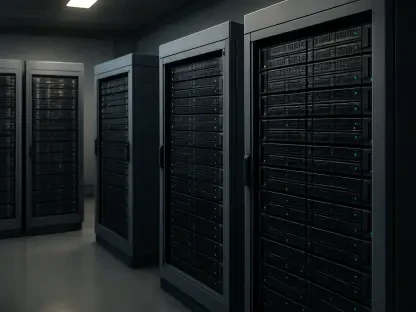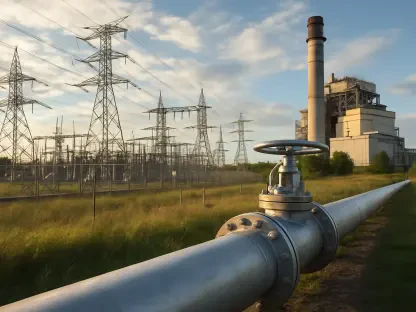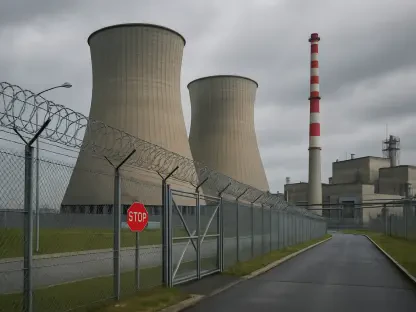Christopher Hailstone has extensive experience with energy management, renewable energy, and electricity delivery. He is also our Utilities expert and provides valuable insights on grid reliability and security.
Can you explain Bruce Lee’s quote and how you think it applies to the current state of electric transmission policy in the United States? Why do you believe the process of building out the grid has become so difficult? What controversial agendas are impacting regulatory frameworks and planning processes?
Bruce Lee’s quote about spending too much time thinking and not enough doing can be directly applied to the current state of electric transmission policy in the U.S. Building out the grid has become extremely complicated, largely due to regulatory frameworks and planning processes that are trying to incorporate broader, often controversial agendas beyond just infrastructure needs. These agendas can include environmental concerns, state vs. federal jurisdiction battles, and debates over market competition, all of which complicate an already challenging landscape.
How would you compare the current opportunity for infrastructure development with the New Deal era’s rural electrification? How can this opportunity promote American jobs and economic growth? Why are private capital markets and utilities ready to invest now?
The current opportunity is comparable to the New Deal era’s rural electrification because it holds the potential to transform and modernize the nation’s infrastructure significantly. This can drive American jobs and foster economic growth by building the energy infrastructure necessary for future competitiveness. Private capital markets and utilities are ready to invest now primarily because of the growing demand for sustainable energy solutions and the economic returns anticipated from these investments. The focus on renewable energy sources and upgrading the grid promises both environmental and economic benefits, making it an attractive proposition for investors.
What is the RMI’s claim about existing transmission planning processes and their focus on smaller projects? Do you agree with their assessment that the wrong transmission projects are being selected? Why do the explanations offered by RMI and the Industrial Energy Consumers of America not add up in your view?
RMI claims that the current transmission planning processes are overly focused on smaller projects rather than larger, regional transmission lines that are essential for a modernized grid. While there might be some truth to their claim, it’s not the full story. The explanations from RMI and the Industrial Energy Consumers of America don’t consider the intricate dynamics of transmission planning, where utilities have historical precedence in building and investing in the grid. The charge that the wrong projects are being selected overlooks the complex economic and regulatory landscape that utilities have to navigate when planning and building these projects.
As transmission-owning utilities know how to build electric infrastructure, why are regional transmission projects seemingly not in their self-interest? How do you reconcile the utilities’ business model with the current state of transmission planning? What unintended consequences do you believe FERC’s policies have created?
Regional transmission projects appear not to be in utilities’ self-interest due to the complicated regulatory environment and the unintended consequences of policies like those from FERC. These policies often misalign with the natural incentives of utilities, which historically thrive on making large capital investments in infrastructure. The unintended consequences include added complexity, extended timelines, and increased uncertainty in project planning, all of which disincentivize utilities from pursuing substantial regional projects despite their expertise and capability to do so.
How have permitting and siting difficulties changed over time for large greenfield transmission projects? How much is FERC responsible for these difficulties? What major FERC policies over the past 25 years have complicated transmission planning?
Over time, permitting and siting have become progressively more difficult for large greenfield transmission projects due to increasing regulatory requirements and public scrutiny. FERC bears some responsibility for these difficulties through policies that create more hurdles rather than facilitating development. Key policies such as Orders 888 and 2000, which shifted planning authorities away from transmission owners to independent system operators (ISOs), have contributed to this complexity, making it harder to efficiently plan and build these crucial infrastructure projects.
What effect did Orders 888 and 2000 have on transmission planning? How did detaching planning from transmission owners impact the development process? What challenges do transmission utilities face in collaborating with independent system operators (ISOs)?
Orders 888 and 2000 significantly impacted transmission planning by transferring much of the responsibility to ISOs, thereby detaching it from the transmission owners who finance and maintain these assets. This separation made the development process more fragmented and less efficient. Transmission utilities now face challenges in information sharing and collaboration, as these processes can be viewed with suspicion and lead to accusations of bias or ulterior motives. The need for greater transparency often results in slower decision-making and planning processes.
How has the role of ISOs in transmission planning affected decision-making transparency and stakeholder involvement? How do you view the balance between transparency and technical design activity in system planning? What are your thoughts on the IECA’s proposal for an “independent transmission planner”?
The role of ISOs has increased transparency and stakeholder involvement in transmission planning, but at the cost of efficiency and technical coherence. While customer and stakeholder input is important, too much democratization can hamper the highly technical nature of system planning. The IECA’s proposal for an independent transmission planner might seem beneficial for neutrality, but it could further complicate decision-making and delay project implementations, as another layer of oversight is introduced.
Can you explain FERC’s Order 1000 and its impact on transmission development competition? How does the competition introduced by Order 1000 differ from traditional market competition? What jurisdictional challenges has Order 1000 created with states?
FERC’s Order 1000 aims to introduce competition in the development of large, regional transmission projects by allowing various developers to bid for these projects. However, this type of competition is not traditional market competition; instead, it involves regulatory oversight where rates and risks are managed by regulators, not market forces. This order has created jurisdictional challenges with states, notably around the power to grant utility franchises and eminent domain, leading to increased legal and regulatory complexities.
What problems have arisen from the complexity and delays associated with the competitive transmission process? Why do you think these policies lead to inferior planning outcomes? How does this affect utilities?
The competitive transmission process has led to significant complexities and delays, resulting in inferior planning outcomes. The procedural and regulatory hurdles make it difficult for utilities to develop well-integrated, forward-looking infrastructure projects. This complexity ends up producing narrowly focused and technologically limited solutions, rather than comprehensive, long-lasting projects. For utilities, these delays and uncertainties are major disincentives, discouraging them from engaging in the very projects that they are best equipped to execute.
What is your forecast for the future of electric transmission policy?
I foresee a necessary shift towards revising existing policies to reduce complexity and improve the alignment of incentives for transmission owners. Focusing on clarity, streamlining permitting processes, and providing transparency without over-complicating the planning processes will help. By restoring more planning authority to transmission owners and fostering genuine regional collaboration, the U.S. can better leverage investment opportunities to modernize and expand the grid efficiently. This, combined with supportive regulatory reforms, should facilitate more robust and reliable infrastructure development in the future.









